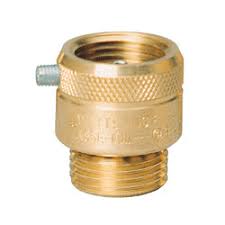What is a Cross Connection?
A cross connection is formed at any point where a drinking water line connects to equipment, a system containing chemicals, or water of questionable quality. Backflow caused by a sudden drop in pressure in the water system - such as due to a fire or water main break - may draw pollutants into household plumbing or the drinking water distribution system.
Common Residential Cross Connections
In residences, a common cross connection hazard is the ordinary garden hose attached to a container with garden chemicals. The garden hose can be easily connected to the potable water supply (faucets of household plumbing) and used for a variety of potentially dangerous applications. Another example is the garden hose connected to a water tap with the end of the hose inserted into a pool or other external source.
How to Prevent Water Supply Contamination
To prevent contamination through cross connections:
- Never submerge a hose in soapy water buckets, pet watering containers, pools, tubs, sinks, drains, or chemicals.
- Never attach a hose to a chemical sprayer without a backflow preventer device.
- Never attach a hose to a chemical sprayer without a backflow preventer.
- Buy and install an inexpensive hose connection vacuum breaker on every threaded water fixture.
- Buy appliances and equipment with a backflow preventer.

Cross Connection Control Program
The Massachusetts Department of Environmental Protection requires all public water suppliers, including the Springfield Water and Sewer Commission, to maintain an ongoing Cross Connection Control Program (CCCP) that involves public education, outreach, and onsite inspections.
For More Information
Contact the Commission’s Cross Connection Control Program at 413-310-3450.